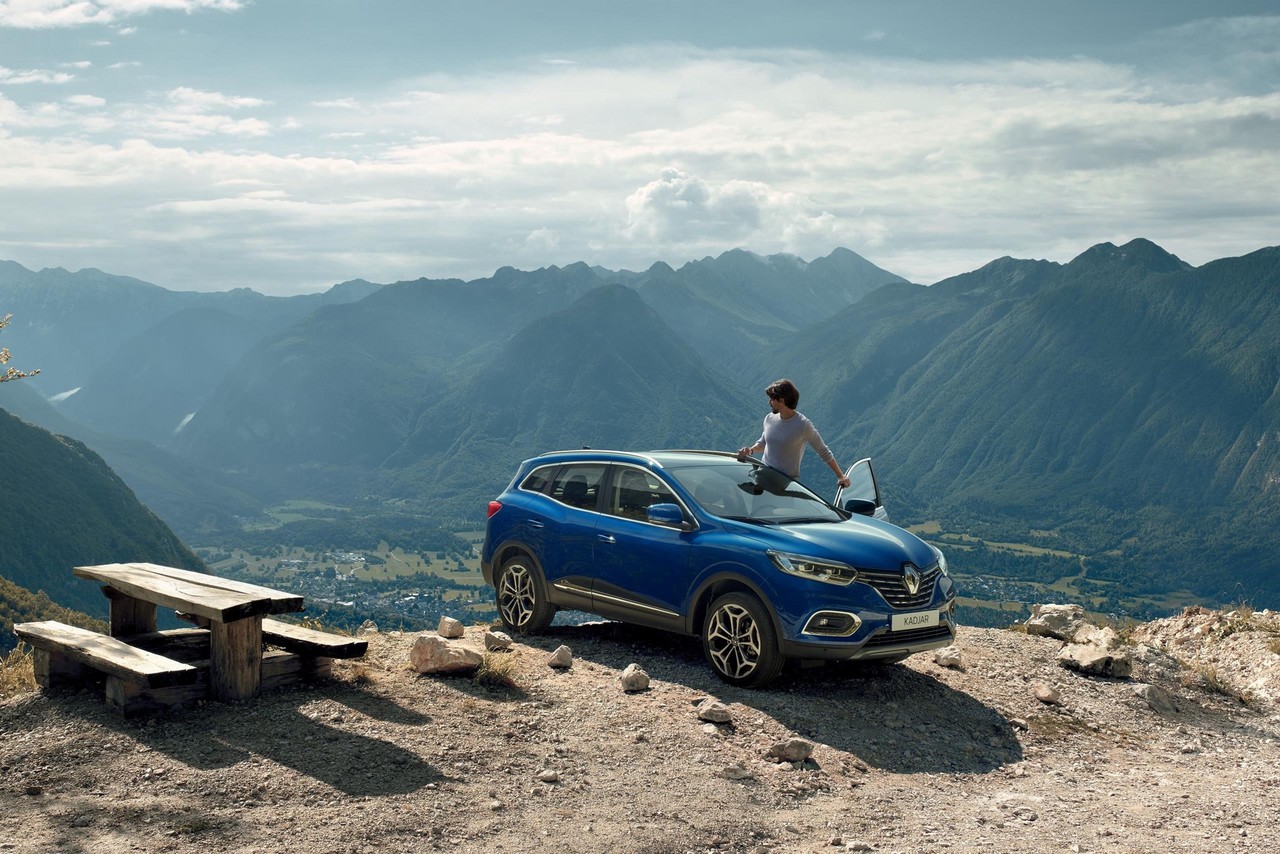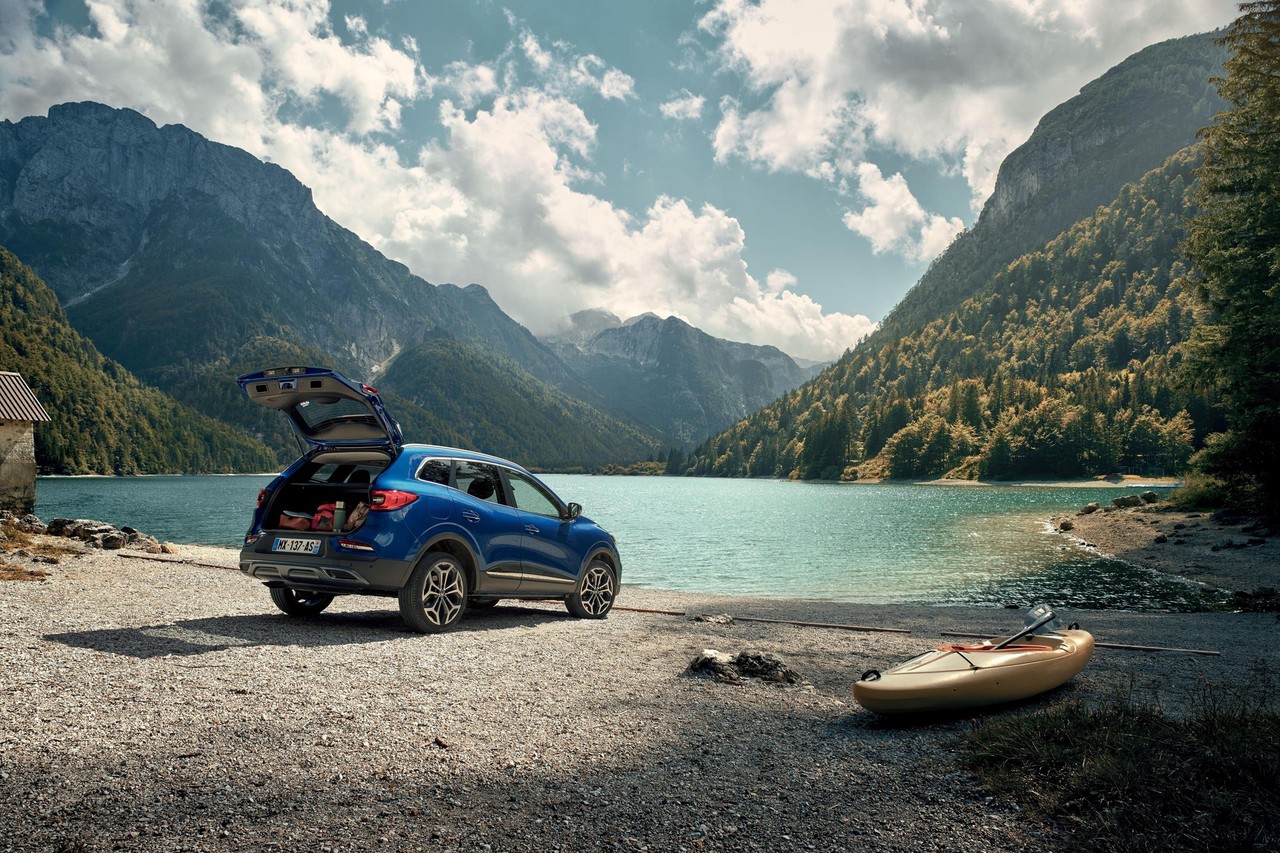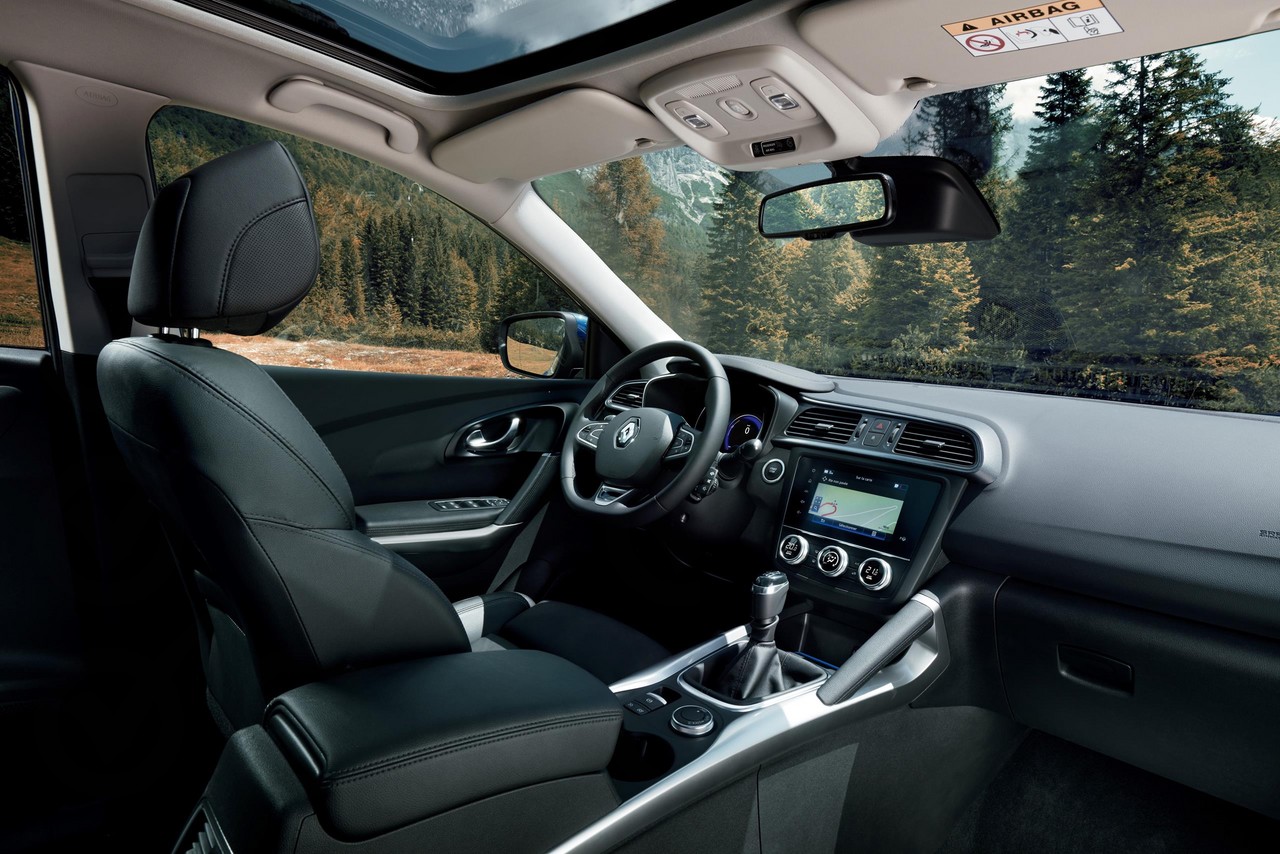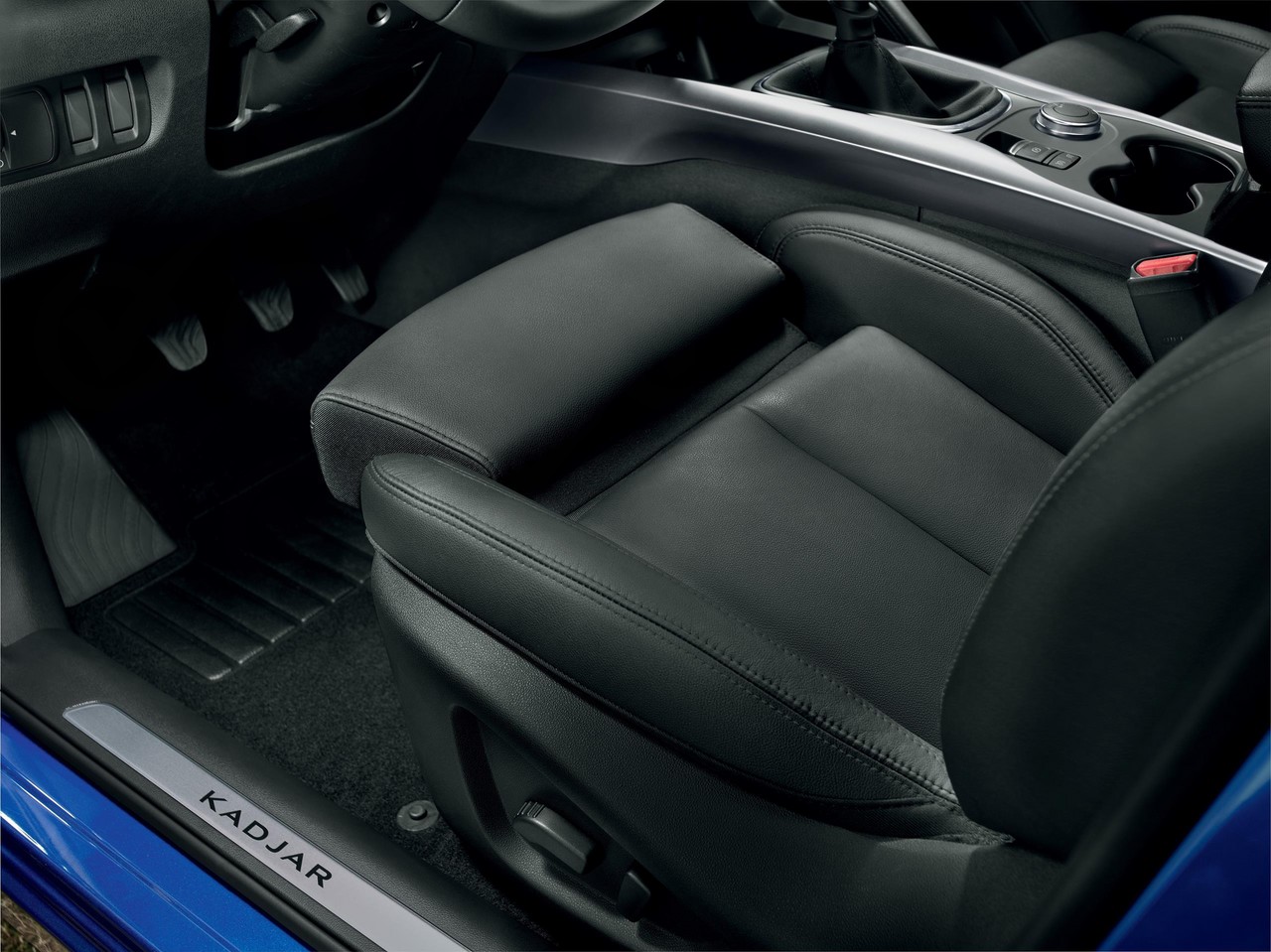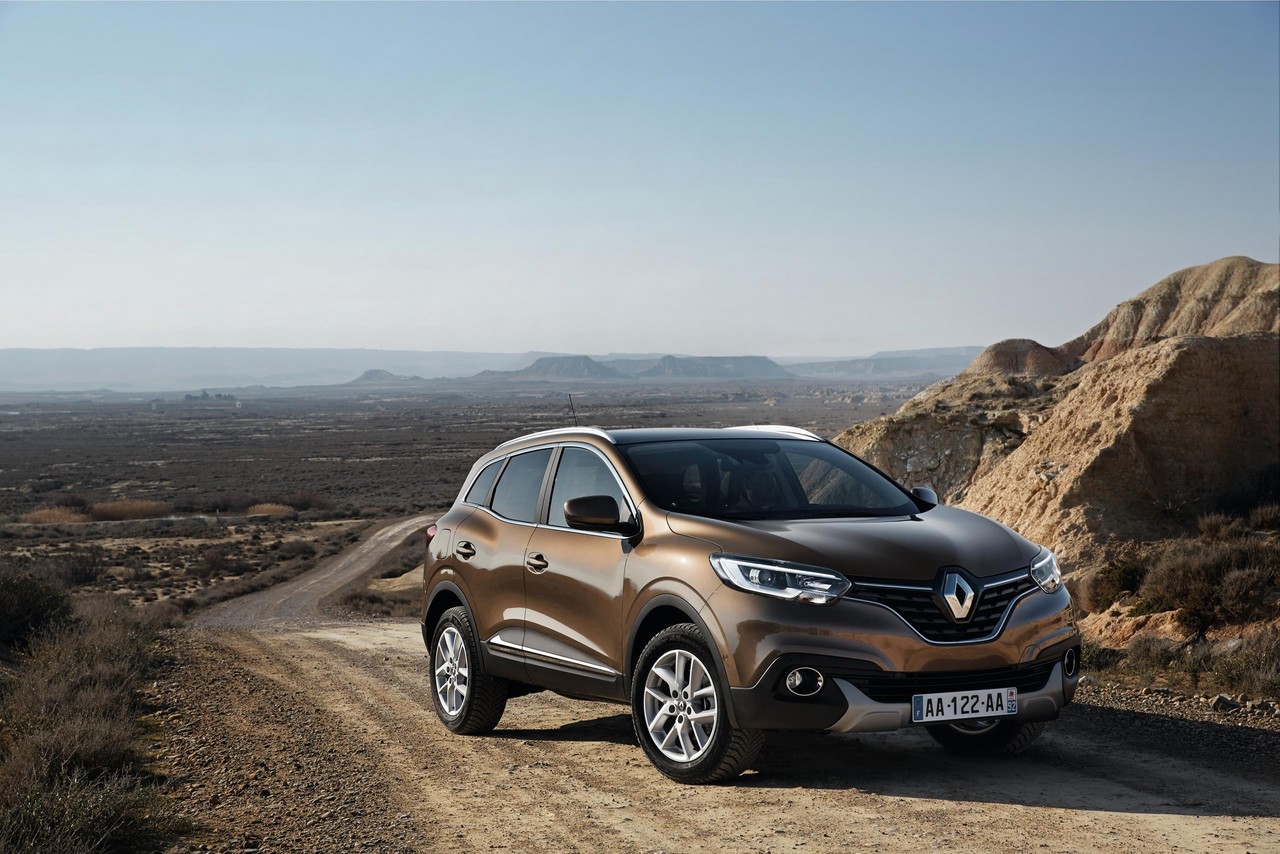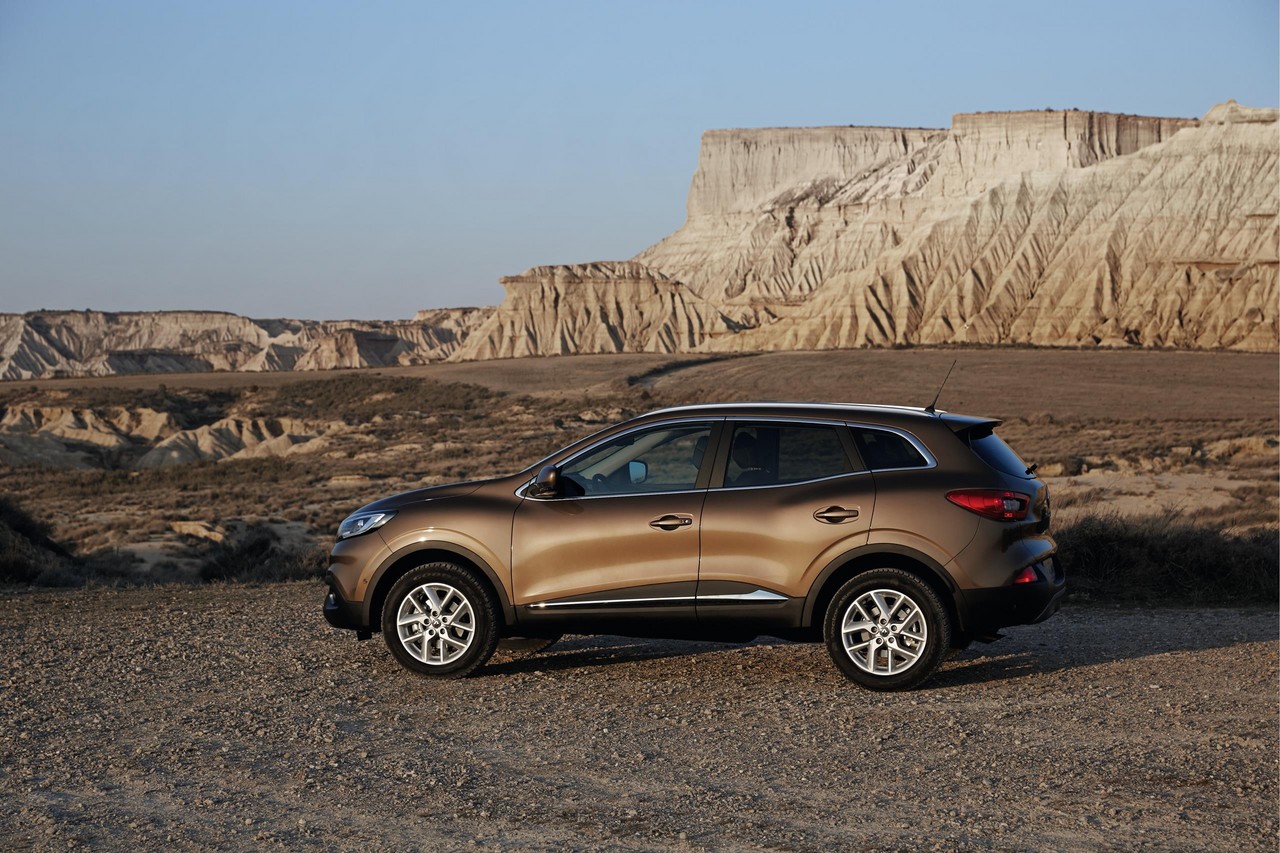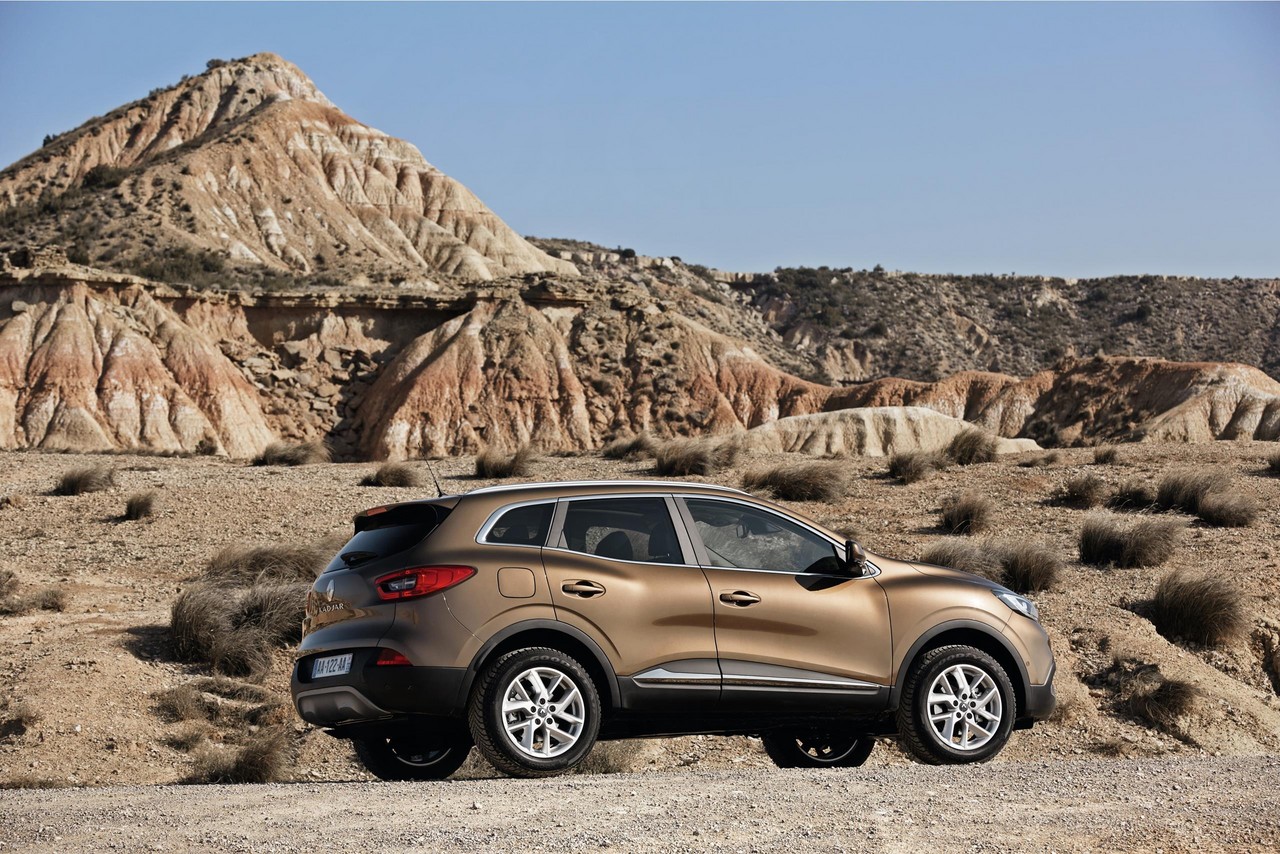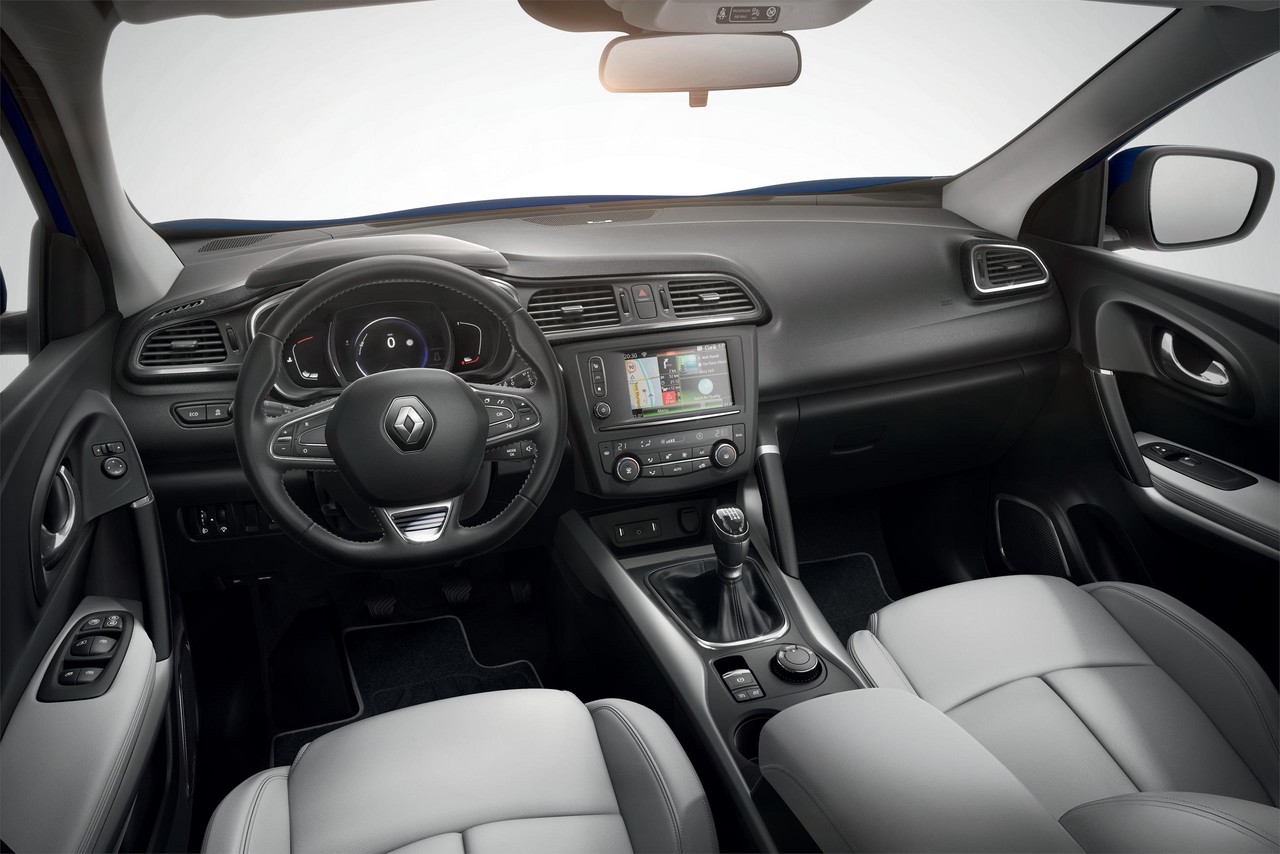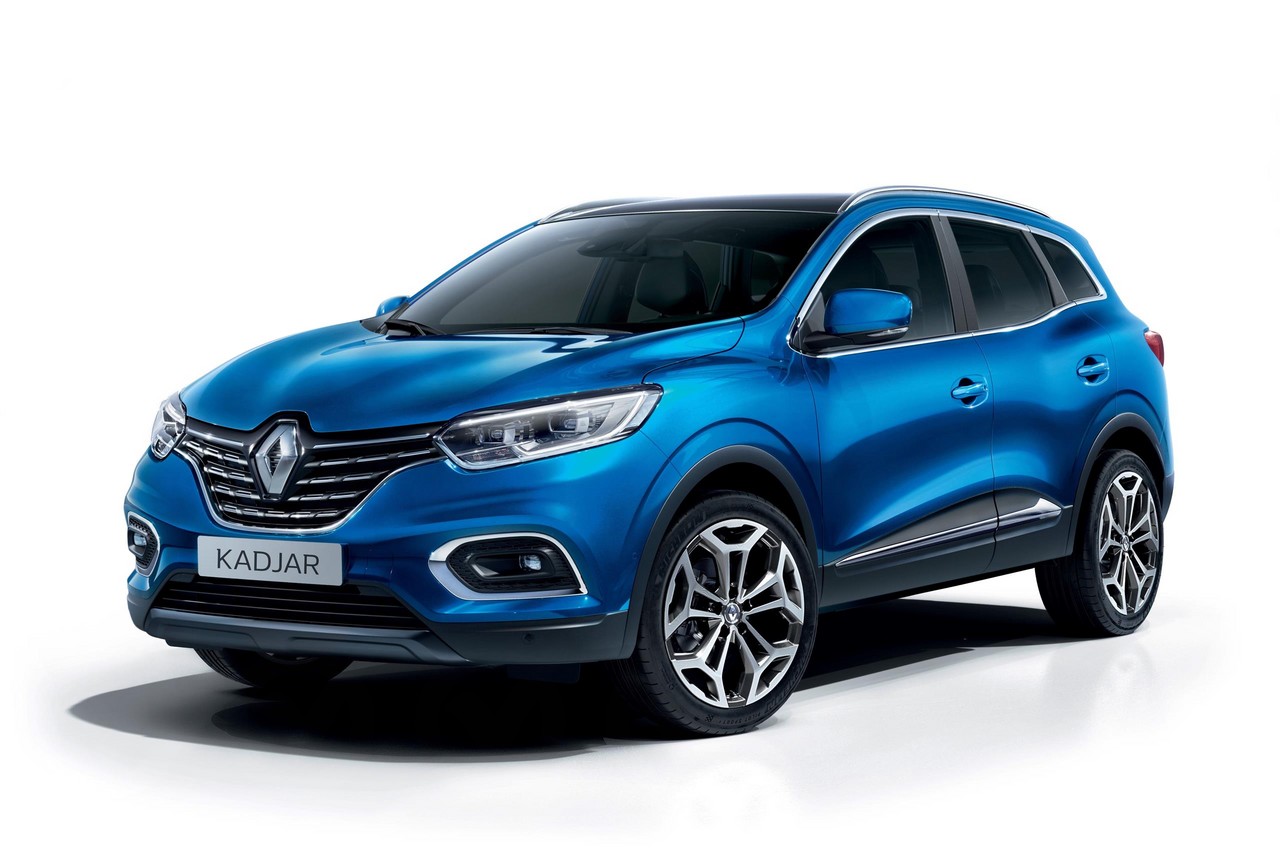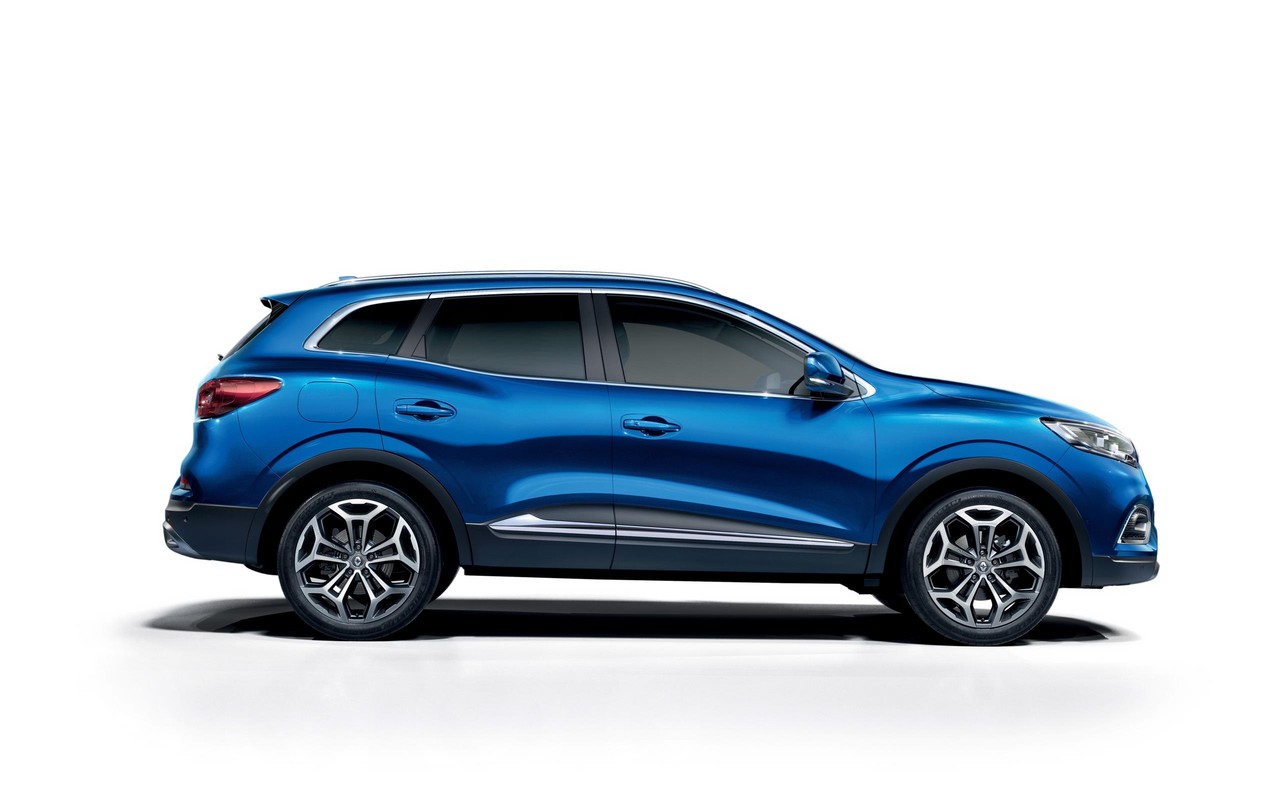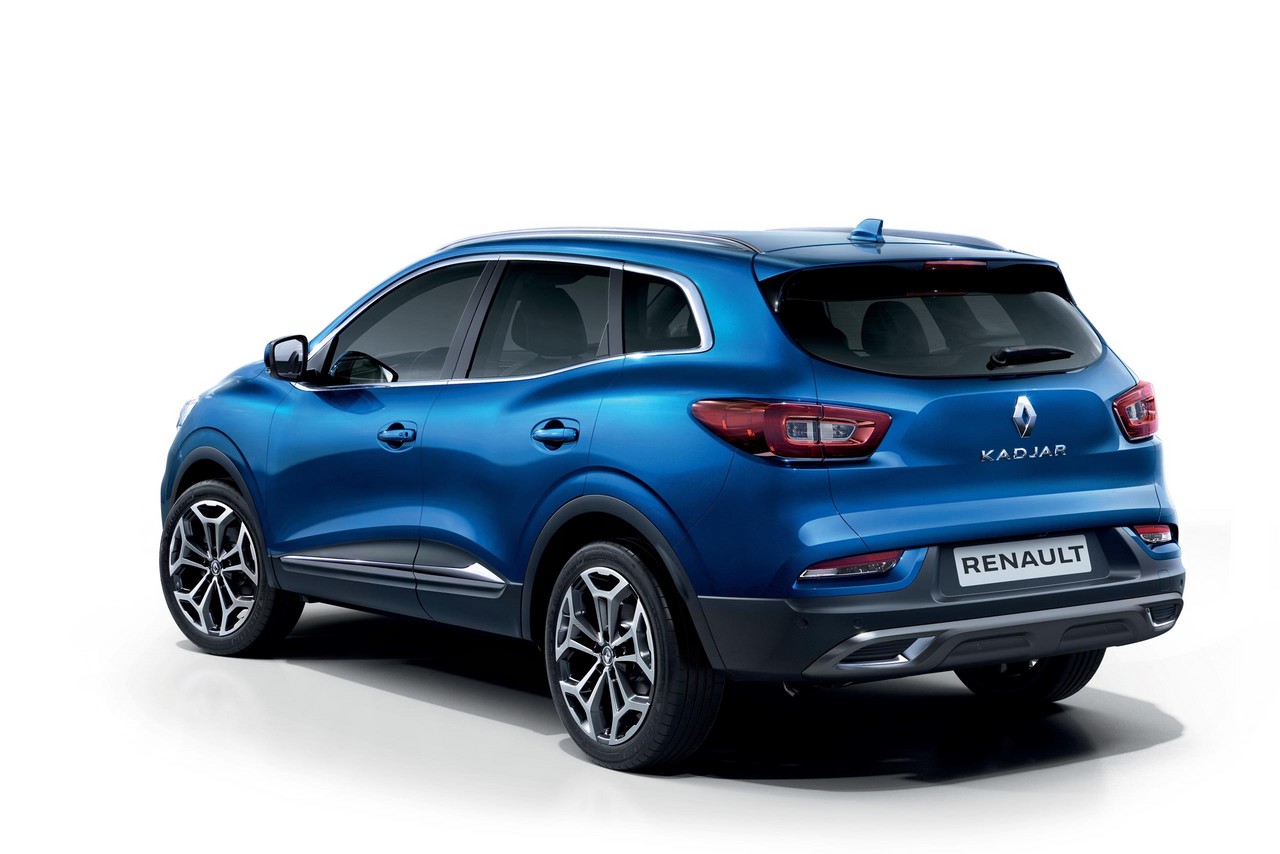
- Willing 1.3-litre turbo petrol engine
- Comfortable ride
- Five star Euro NCAP safety rating…
- … but Kadjar Life omits Lane Departure Warning and Blind Spot Warning
- Light steering lacks feel
- Ride/handling balance is inferior to the related Nissan J11 Qashqai
- Bizarre ergonomics: cruise control switch on the centre console and column stalk audio controls
- Engine requires premium unleaded petrol (95 RON)
Overview
Released in Australia in November 2019, the Renault XFE Kadjar was a mid-size SUV. Manufactured in Palencia, Spain, the front-wheel drive Renault Kadjar was powered by a 1.3-litre turbocharged petrol engine that was mated to a seven-speed double clutch transmissions (Renault’s ‘Efficient Dual Clutch’ or EDC). Furthermore, the range consisted of Life, Zen and Intens editions.
| Variant | Engine | Trans. | Peak power | Peak torque |
|---|---|---|---|---|
| TCe 160 EDC | 1332 cc turbo petrol I4 | 7sp EDC | 117 kW at 5500 rpm | 260 Nm at 1750 rpm |
Body and dimensions
The Renault XFE Kadjar ws underpinned by the Renault-Nissan ‘Common Module Family’ (CMF-CD) architecture which was shared with the Nissan T32 X-Trail and Nissan J11 Qashqai . Compared to the J11 Qashqai , the Renault XFE Kadjar was 72 mm longer (at 4449 mm), 30 mm wider (1836 mm) and 12 mm taller (1607 mm), though wheelbase length was unchanged (2646 mm); ground clearance was 185 mm. The Renault XFE Kadjar TCe 160 had a kerb weight of 1362 kg.
Inside, the Renault XFE Kadjar had a luggage capacity of 408 litres (above the boot floor) and this increased to 1478 litres when the rear seats are folded down and luggage is filled to the roofline.
Suspension and steering
The Renault XFE Kadjar had MacPherson strut front suspension and a torsion beam rear axle. Furthermore, the Kadjar had rack-and-pinion steering with electric power assistance; the steering wheel required 3.17 turns from lock-to-lock, while the minimum turning circle was 10.72 metres (kerb to kerb).
Safety equipment
Standard safety equipment for the Renault XFE Kadjar included dual front airbags, front side airbags, full-length curtain airbags, ABS, electronic brake force distribution, brake assist, electronic stability control, traction control and front seatbelts with pre-tensioners and load limiters.
As standard, the Renault XFE Kadjar was equipped with Renault’s ‘Advanced Emergency Braking System’ (AEBS, Inter-urban). Operating at speeds between 30 km/h and 140 km/h, AEBS warned the driver if there was a risk of collision with the vehicle ahead. If the driver failed to respond or did not react sufficiently, the brakes would be applied automatically to avoid or reduce the severity of a collision.
The Renault Kadjar Zen and Intens were further equipped with –
- Lane Departure Warning (LDW): operating at speeds above 70 km/h, LDW would alert the driver if the vehicle crossed a solid or broken white line without previously indicating; and,
- Blind Spot Warning (BSW): operating at speeds between 30 km/h and 140 km/h, BSW could warn the driver of the presence of another vehicle in the driver’s blind spot via a visual signal in the door mirrors.
Euro NCAP testing
In Euro NCAP testing , the Renault XFE Kadjar received a five star safety rating which included an 89 per cent adult occupant protection rating and an 81 per cent child occupant protection rating. In the frontal offset test, protection of the front occupants was generally rated as good, though chest protection for the passenger was rated as adequate (i.e. a slight risk of serious injury). Furthermore, maximum points were awarded in the side impact and pole tests.
Wheels, tyres and brakes
The Renault Kadjar Life and Zen had 7.0J x 17-inch alloy wheels with 215/60 R17 tyres. The Kadjar Intens, however, had 7.0J x 19-inch alloy wheels with 225/45 R19 tyres.
Across the range, the Renault Kadjar had 296 mm by 26 mm ventilated front brake discs and 290 mm by 13 mm solid rear discs.
Features: Renault Kadjar Life
As standard, the Renault Kadjar was equipped with Renault’s ‘R-Link 2’ multimedia system which had a seven-inch touchscreen, digital radio tuner, auxiliary input (3.5 mm), voice recognition, Bluetooth mobile phone connectivity and audio streaming, smartphone integration via Apple CarPlay and Android Auto smartphone integration, and two front USB charging ports.
Beyond this, standard features for the Renault XFE Kadjar Life included an Arkamys audio system with seven speakers, ‘dark carbon’ cloth upholstery, dual-zone climate control air conditioning, cruise control with speed limiter, halogen headlights, LED daytime running lights, rear fog lights, a rear view camera, front and rear parking sensors, dusk-sensing headlights, rain-sensing wipers, a leather-wrapped steering wheel and gear knob, a 60:40 split folding rear bench seat, remote central locking, power adjustable door mirrors, power windows (front and rear), a height and reach adjustable steering wheel, height adjustable front seats, rear privacy glass, 12 volt power sockets (front and rear), tyre pressure monitoring, a trip computer and an immobiliser.
Features: Renault Kadjar Zen
Compared to the Kadjar Life, the Kadjar Zen was further equipped with a navigation system, ‘dark carbon’ cloth and ‘leatherette’ upholstery, front fog lights with cornering function, side parking sensors, Renault’s ‘Smart Key Card’ with automatic locking and welcome functions, ‘one-touch easy folding’ rear seats, push-button start, illuminated vanity mirrors, a split-level boot floor, two rear USB charging ports and roof rails.
Features: Renault Kadjar Intens
The range-topping Renault Kadjar Intens was distinguished by its Bose audio system with seven speaker and a digital amplifier, black leather-trimmed upholstery, power adjustable driver’s seat, extendable front seat cushions, heated front seats, LED headlights, LED fog lights (front and rear), leather-trimmed steering wheel, electrochromatic rear view mirror, ‘Satin Chrome’ interior trim and panoramic sunroof.
The Kadjar Intens was also equipped with –
- ‘Easy Park Assist’: could measure parking spaces (whether parallel, perpendicular or angled) and provide automated steering for the parking manoeuvre while the driver controlled vehicle speed. Easy Park Assist could also assist when exiting from parallel parking spots; and,
- Automatic high/low beam: would automatically switch from high beam headlights to low beam lights – when either vehicles ahead or oncoming traffic were detected – to avoid dazzling other drivers.
Brochure and Specifications
- Brochure: Renault XFE Kadjar (September 2019)
- Equipment: Renault XFE Kadjar (September 2019)
- Specifications: Renault XFE Kadjar (September 2019)
